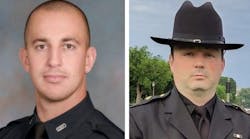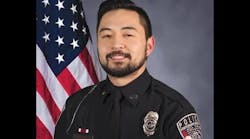In United States v. Veal, the Eleventh Circuit Court of Appeals decided to address the issue of lying while in the confines of a Garrity statement. This issue haunted the courts and the structure of internal affairs for years. Under Garrity, governments have the right to compel a statement and could terminate a person for lying; however, it was a gray area for prosecution.
Veal gave governments the answer. The event leading to the decision was strong. The chief of police in Miami, Florida, received information from an anonymous source that drug dealers met at a residence in Miami and contracted to kill Pablo Camacho, a SNU (Street Narcotics Unit) officer. Officers Nathaniel Veal, Andy Watson, Pablo Camacho, Charlie Haynes, Thomas Trujillo, and Ronald Sinclair were informed of the meeting and that a contract was out for Camacho. The officers knew the residence where the contract originated to be that of Leonardo Mercado, a known drug dealer.
Camacho, Veal, Watson, Haynes, Sinclair and Trujillo went to Mercado's home. Mercado was outside the residence. Camacho went into Mercado's home. Within minutes, the other officers went into the home and closed the door and curtains. Moments later, other police units, fire, and rescue arrived, summoned by calls for help from Sinclair and Camacho. Officer Mary Reed arrived and went inside the home.
Once there, she saw the SNU officers in the room over the bloodied body of Mercado. Haynes told Reed that Mercado was "the mother [expletive] that put a contract out on Camacho" and was encouraged to "get her kick in." Reed declined the offer, knowing Mercado was in bad shape. Mercado was indeed severely injured and died at the scene. The autopsy revealed multiple bruises, wounds to the head, scalp, neck, face, and fractured ribs. Furthermore, shoe imprints on the body were subsequently matched to some of the officer's shoes.
The SNU officers left, returning to the police department. Witnesses saw the officers enter the lieutenant's office and shut the door. The witnesses saw nothing out of the ordinary about Camacho when he entered, however when he left, his shirt was ripped on the chest and sleeve. While inside the lieutenant's office, photographs were taken that showed the damage to Camacho's shirt. The photographs, a butcher knife from the scene, and a bag of crack cocaine were placed into a cabinet in the lieutenant's office.
Camacho went to Sylvia Romans, a crime scene technician, who took photographs in a controlled environment. These were routinely taken when officers are involved in incidents of possible excessive force. Romans took photographs of the missing pocket and the tear on the shirt sleeve. Camacho had no visible cuts, but his right eye was bruised.
In an unexpected turn of events, a freelance photographer was at the scene and took a photo of Camacho in the door of Mercado's home. There was no damage to Camacho's shirt visible in those photographs. The same photographer later came to the police department and took photographs showing the tears on the shirt. At that time, the front of the shirt was temporally repaired by a piece of tape holding it together.
Also, unexpected by the SNU officers was that two officers visiting from the Detroit Police Department accompanied the SNU lieutenant to Mercado's home. One testified she saw an officer leaving with a rusty butcher knife. Later in the evening, she saw the knife in the lieutenant's office. Camacho was treated at a local hospital for high blood pressure and swelling. The other officers had no complaints of injury.
Miami homicide was advised that Camacho had been involved in the death of Mercado, but Veal, Watson, Haynes, and Sinclair were not. All were interviewed by state investigators about their knowledge and subsequent involvement in the death of Mercado. All said they had stopped by Mercado's home because Camacho saw drug activity that gave them reason to investigate further. They denied they were there because of the death threat on Veal, and that they had any physical contact with Mercado. Once they entered Mercado's home, Mercado was lying on the floor. Furthermore, they did not admit to meeting together at the lieutenant's office.
FBI Special Agent David Hedgecock opened an investigation into the death of Mercado, and worked with the Miami Police Department homicide investigators. All evidence, statements, and photographs were reviewed, including statements obtained under Garrity. This led to the filing of federal civil rights charges against Camacho, Veal, Watson, Haynes, Sinclair, and Trujillo. The officers contested the use of the Garrity statements in the case. The statements were ruled inadmissible, as they were under the scope of Garrity. The officers were acquitted on conspiracy and in the remaining counts the jury could not reach a unanimous verdict. There were no formal statements made by Camacho and Trujillo, as they were directly involved in the death of Mercado.
Three years later, In July, 1993, a federal grand jury in the Southern District of Florida indicted Camacho, Veal, Watson, and Haynes (Sinclair had died in the intervening time). Charges were:
- Conspiring to obstruct the due administration of justice, and engaging in misleading conduct designed to hinder, delay, and prevent the communication of information relating to the possible commission of a federal offense to a federal law enforcement officer or judge
- Knowingly misleading state investigators regarding the true circumstances of the death of Mercado with the intent to prevent the communication of information relating to the possible commission of a federal offense
- Perjury
- Making false statements
Veal, Watson, and Haynes were convicted on the second count, based on their false statements to state officers. The defendants appealed to the 11th Circuit Court of Appeals. The appeal was based on the grounds the statements were made under Garrity, and thus were forever barred from use in any prosecution. They contended the statements were coerced, because, they were under threat of the loss of their employment should they refuse to answer questions.
The 11th Circuit Court ruled:
Although an accused may not be forced to choose between incriminating himself and losing his job under Garrity, neither Garrity nor the Fifth Amendment prohibits prosecution and punishment for false statements or other crimes committed during the making of Garrity-protected statements. Giving a false statement is an independent criminal act that occurs when the individual makes the false statement; it is separate from the events to which the statement relates, the matter being investigated...We agree with the circuits that have addressed this issue before us and have determined that Garrity-insulated statements regarding past events under investigation must be truthful to avoid future prosecution for such crimes as perjury and obstruction of justice. Garrity protection is not a license to lie or to commit perjury.
Simply put, once given immunity from prosecution, the accused has the choice of not answering or answering truthfully. There is no gray area in this situation. If one gives a false statement, it is in itself a separate criminal act. The final note is that Garrity does not afford one the right to lie or commit perjury without impunity.
Officers must be aware of the penalty should they lie while under Garrity immunity. Many departments are adding a statement to the five-part Garrity warning that the officer must not lie while under the umbrella of Garrity. Departments should take an additional step--explain it to the officer in terms they will understand. The area should not be gray. It is already in black and white. Don't allow officers to make an error in judgment that can and will cost them their freedom.


